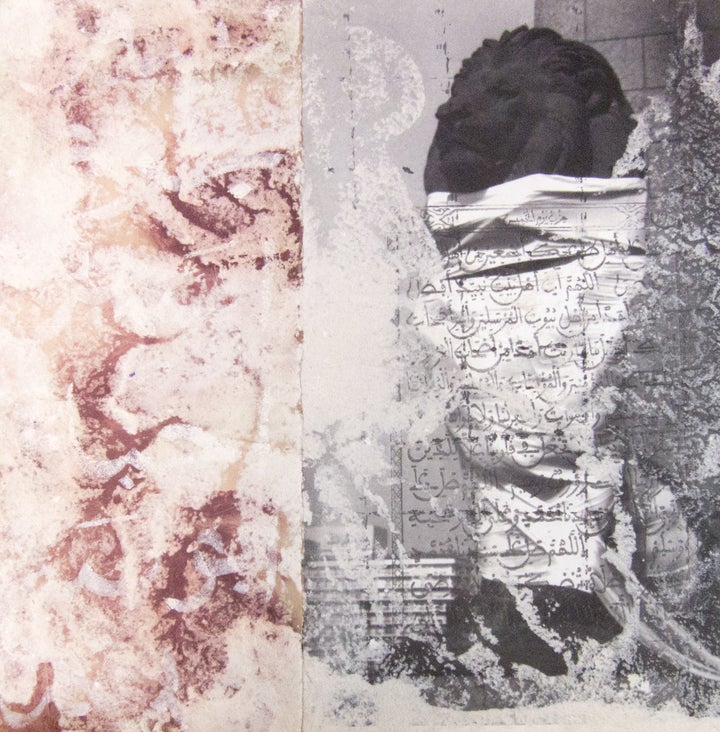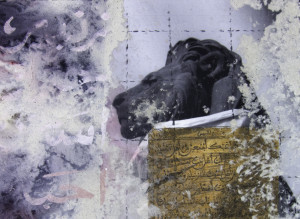
Since its inception, art history has provided a lens for cultural events and this time Mohamed Abou El Naga’s solo exhibition “The Lion” serves as an intensely personal look at the feelings of the Egyptian people before and after the revolution. The exhibit is at the ADC Contemporary Art Gallery in association with Saatchi Online Gallery.
The feelings of the Egyptian people are explored in multiple media: video, photography, drawings, calligraphy and canvas combines are all complementary pieces of the exhibit. The artist immerses you into the mindset of the Egyptian people by playing contemporary Egyptian music, making it a multi-sensory experience.
An integral part of the works is the use of traditional Arabic calligraphy, symbolic of the past and ritual, centered around the protagonist of the exhibit: the lion. For Abou El Naga, the lion is symbolic of the personal experience of the artist and that of the Egyptian people at large, one of frustration, loneliness and sadness.

Abou El Naga started working with the idea of the lion in 2008, long before the revolution took place. Part of the exhibit is a photograph of the lion statue that Abou El Naga uses in the rest of his pieces contrasted with the image of a live lion in a cage. Each subsequent image within the exhibition features a the lion statue, itself a site of the revolution, enshrouded like a mummy, an important image in Egyptian culture. The lion is currently trapped but has the ability to be resurrected and proceed to a new life. Both the lion in the cage and the statue are are trapped, they have the ability to do so much more but lack the autonomy. Abou El Naga intended these lions to be representative of the Egyptian people, their power and desire for freedom visible in their eyes but their path obstructed.
Moving through the exhibition, the viewer can see the journey of Abou El Naga and the Egyptian people. Text is used to symbolize tradition and rigidity in the first works, but its presence on the wall explores its transformative quality. Abou El Naga has written 325 different words for lion in traditional Arabic calligraphy, recognizing that change can co-exist with tradition.

The combines are the most recent works, and show evidence of the changes the revolution has brought. They are still grey like the other peices, yet there is now color and texture, pointing towards a more progressive future. Abou El Naga is showing that Egypt is still in the process of forming its new identity.

Abou El Naga was born in the Egyptian city of Tanta and has a PhD in Art Philosophy. He was the first Middle Eastern artist to receive a grant from the Japan Foundation in order to study paper-making. He represented Egypt at the 2002 Venice Biennial and received first prize at the 2001 Alexandria Biennial. He was chosen in 2009 to be the curator of the 25th Alexandria Biennial which will open December 17,2011.
The show is at the ADC Contemporary Art Gallery in association with Saatchi Online Gallery, Factory Place Arts Complex, 1330 Factory Pl., Building i (Off Alameda St. between 5th and 6th), Los Angeles, CA until June 28th.